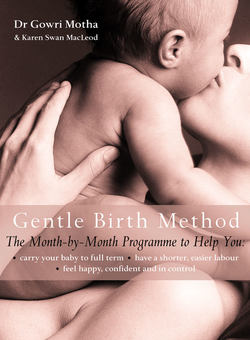Читать книгу The Gentle Birth Method: The Month-by-Month Jeyarani Way Programme - Karen MacLeod Swan - Страница 21
How to Counteract Vata
ОглавлениеExercise
Exercise in moderation, as the vata mother is rather weak – engage in mild to moderate exercise only.
Walking and swimming are good.
Do indulge in some form of exercise – it has a mood-elevating effect.
Avoid going to the gym, especially in the first three months of pregnancy.
Food
Eat 3 to 4 regular light meals a day that preferably contain a representation of all the tastes like salty, sour, bitter, sweet, pungent and astringent.
Avoid snacks in between meals.
Choose clear soups.
Avoid mushrooms.
For non-vegetarians, chicken soups are recommended.
Fish is also good if you can tolerate it.
Avoid cheese as vata mothers have poor digestive power, especially in early pregnancy.
Baladi choornam (my Ayurvedic formulation) is very good for vata mothers.
Herbs
The following herbs can balance vata:
Black pepper
Dill seeds
Cumin seeds
Basil leaves
Parsley
Ginger
Music
Relaxing and calming music is very good for balancing vata.
Chanting is beneficial. Many cultures and different religious persuasions use chants (see pages 82-3 for some mantras). The Gayatri Mantra is nondenominational.
If you are religious, and depending on your religious leaning, you may like to recite prayers, such as the rosary, or Buddhist or Benedictine chants that instil peace and harmony.
Physical Treatments
Massage with oils can be amazingly effective in reducing excessive vata.
Self-massage or being massaged by your partner on a regular basis, for 20-40 minutes, is recommended. Suitable oils are virgin olive oil, or sesame oil.
Essential oils can also be used to reduce vata – try lavender, rose, or jasmine oil. Use from 4 to 10 drops in 20ml of a base oil. This can be used for self-massage or by a practitioner during general or Creative Healing massage.
Reflexology reduces vata, calms the mind and gives mental clarity. It also improves digestion and speeds up gut motility, thereby relieving constipation.
Vata Labour Issues
Factors to consider during delivery:
The pelvis is usually smaller.
The nervous disposition of vata mothers means they may experience more pain if not prepared effectively for birth.
Lots of preparation, both mental and physical, is needed to avoid surgical intervention.
Lots of low-back massage as preparation for labour will facilitate a manageable labour and gentle birth.
Vaginal oils and stretching techniques as preparation for birth are invaluable in preventing instrumental delivery.
Vata mothers need continuous massage during labour. Oil massages on the back, neck, shoulders and lower limbs are very beneficial during labour.
Vata mothers are more prone to having a retained placenta. This is not a big problem and doctors routinely administer an injection that forces the body to expel the placenta. However, many of my mothers – aiming for a natural birth – are not keen to submit to drugs at this late point in their baby’s birth, so in my self-hypnosis classes in London, I talk the mother through a hypnotic sequence in which she visualizes her body producing a surge of oxytocin (the hormone that encourages contractions) 15 minutes after the birth of the baby, thereby expelling the placenta. I have found this technique to be very effective on my vata mothers. If you are a vata mother, you can guide yourself through a short visualization of this hormonal occurrence – one or two minutes a day will be enough. You don’t need any medical expertise to do this – simply by suggesting this automatic hormonal production whilst your mind is deeply relaxed and receptive, you can pre-condition your body to expel your placenta within 10-15 minutes after the birth.
Vata mothers can have longer labours due to poor expulsive forces during labour i.e. poor uterine contractions, or uncoordinated uterine action, which can lead to slow dilation of the cervix.
